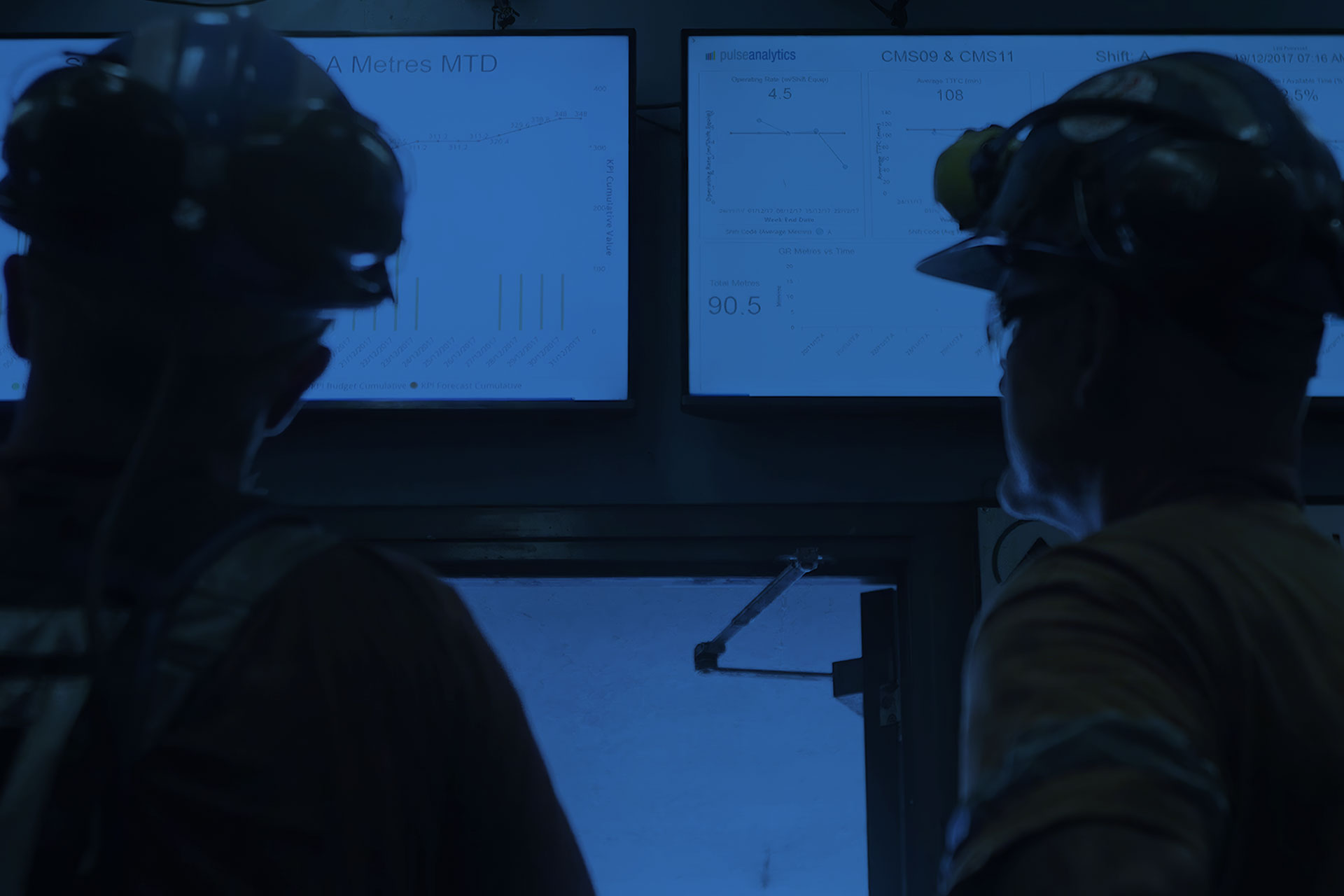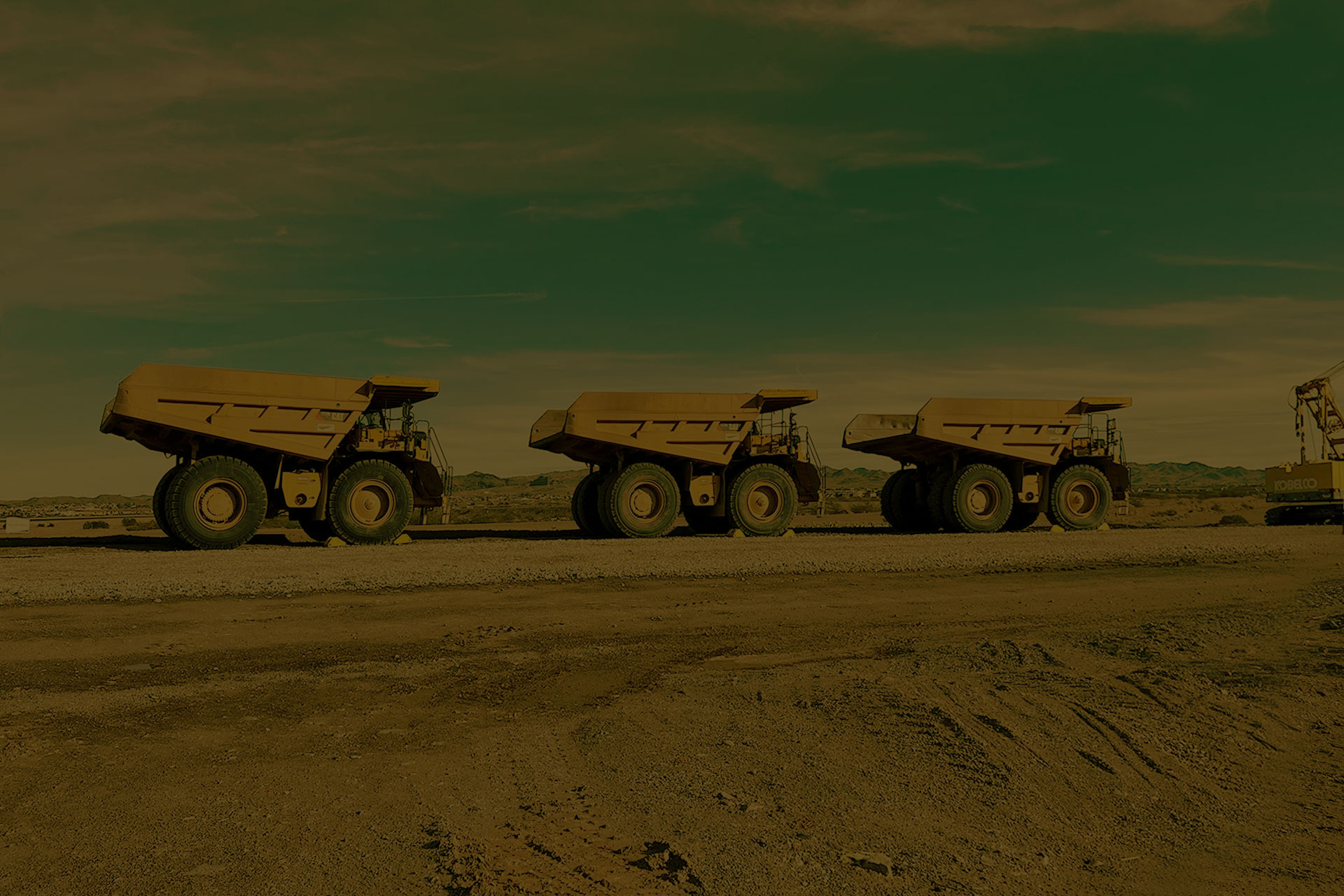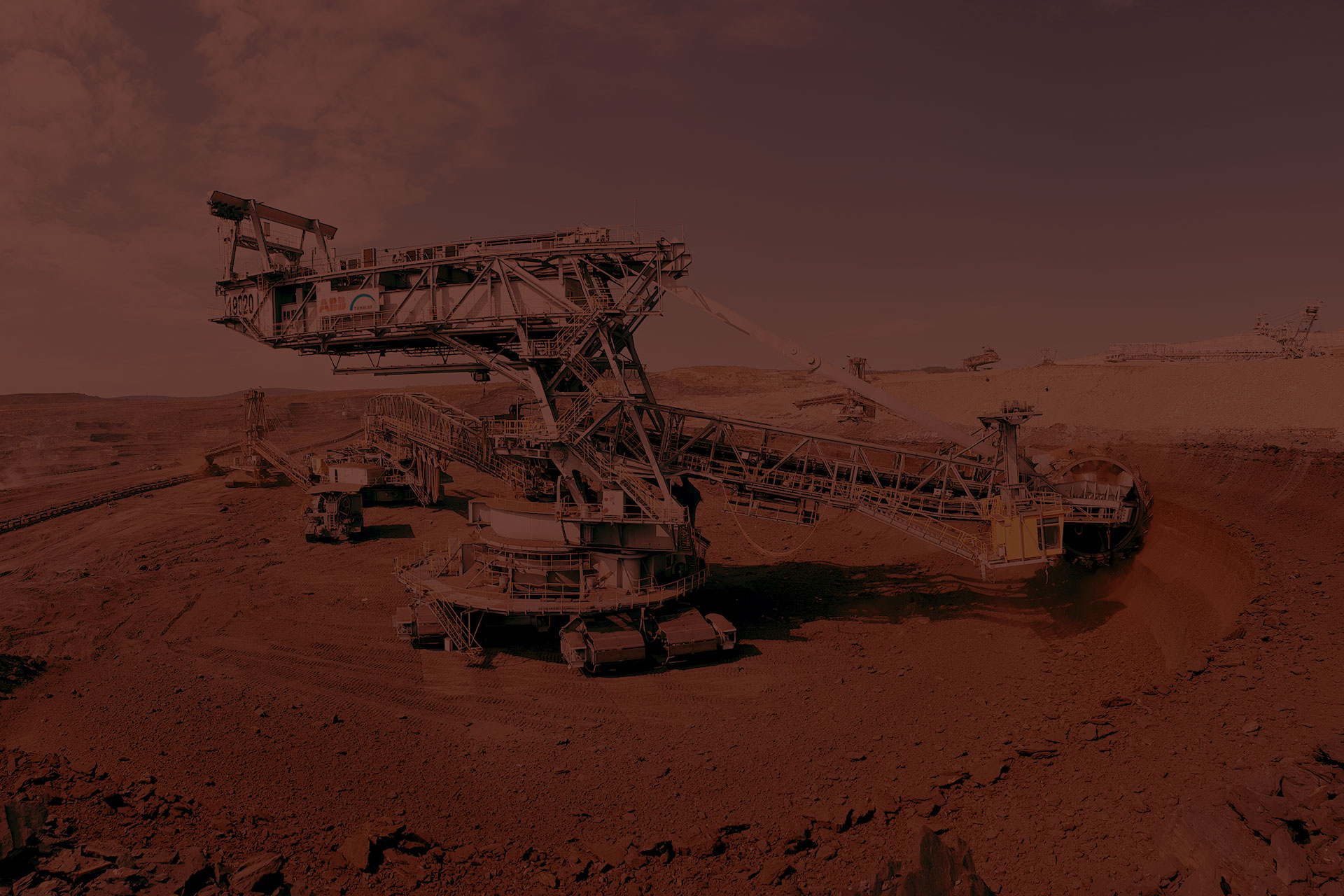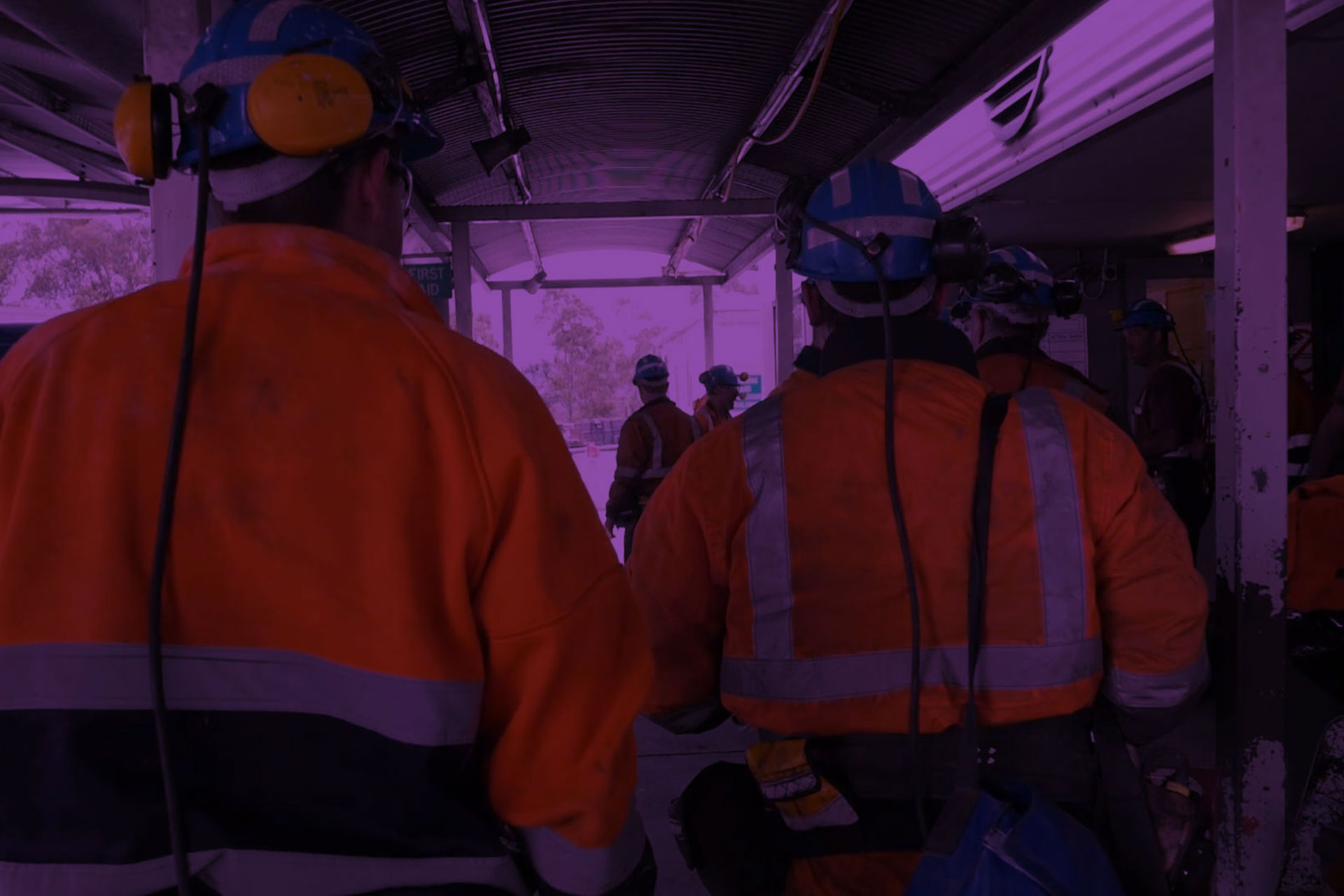Glossary
A
Alumina is a silvery ductile metallic element found primarily in bauxite. Used to produce aluminium for numerous alloys and light metal castings, utensils, aircraft parts, etc. As a strong and lightweight material that can be infinitely recycled, aluminium can help society significantly reduce greenhouse gas emissions and energy consumption [Climate Change Statement]. The abbreviation for aluminium is Al (AL) and the atomic number is 13. Leading countries for aluminium production include China, Russia, India, Canada, the United Arab Emirates, and Australia.
Assets are things that the mining company owns, such as its plant and equipment. The Pulse ERP presents a full asset life-cycle management solution, for example with Pulse Maintenance and predictive triggers to manage maintenance works, Pulse Planning to plan the utilization of human resources and parts for maintenance, Pulse Supply for requisitioning and automated procurement to payment, and Pulse Financials handling asset depreciation and the capitalization of completed works, etc.
B
Bauxite (BX) is a sedimentary rock that is the world’s main source of aluminium and gallium. Australia is the world’s largest miner of bauxite, followed by Guinea and China. Most of the world’s bauxite deposits can be found within 1 to 20 meters of the Earth’s surface and it is generally strip-mined.
C
Care and maintenance is the term used in mining where the mine has ceased operations but will be maintained in a safe and stable condition with the potential to reopen in the future. While the mine is closed, a care and maintenance program will manage environmental risks associated with tailings dumps, hazardous materials, and open and underground pits. The care of idle plant and machinery will also be included in the program. Public health and safety considerations and emergency response plans continue during the care and maintenance phase. The decision to permanently close the mine may still be taken at a later stage.
CIL stands for carbon-in-leach. This is a gold extraction process called cyanidation where carbon is added to the leach tanks so that leaching and adsorption take place in the same tanks. It is the most commonly used leaching process for gold extraction.
CIP stands for carbon in pulp (CIP) processing, an extraction technique for the recovery of gold that has been liberated into a cyanide solution as part of the gold cyanidation process.
A computerized maintenance management system (CMMS) is a software package that maintains a computer database of information about an organization’s maintenance operations. Organizations using the Pulse mining management and reporting system have Pulse Maintenance as their CMMS. CMMS data may also be used to verify regulatory compliance.
Copper is a malleable and ductile metal with very high thermal and electrical conductivity. Leading countries for copper mining include Chile, the United States (mainly Utah and New Mexico), and Peru, while it is also mined in Australia. Copper is the chemical element Cu with an atomic number of 29. The total amount of copper on Earth is vast, with around 1014 tons in the top kilometer of Earth’s crust, which would be about 5 million years’ worth at the current rate of extraction. However, the estimates of copper reserves that are cost-effectively and practically available for mining vary from 25 to 60 years. Recycling is a major source of copper in the modern world. The UN includes copper along with lithium, nickel, cobalt, and rare earth elements as essential components for clean energy technologies.
D
A mine can be decommissioned for reasons such as the resource having been depleted or no longer able to be extracted economically, safely, or without harm to the environment. Due to the size and complexity of rolling mine operations, decommissioning will usually take considerable time and may also involve remediation as well as longer-term care and maintenance.
In mining and quarrying, drilling and blasting is the use of explosives and other methods, such as gas pressure blasting, to break rock for excavation. As a tunnel or excavation progresses the roof and side walls need to be supported to stop the rock falling into the excavation.
E
Also called electroextraction, electrowinning describes the electrodeposition of metals from their ores that have been put in solution via a process commonly referred to as leaching. Nickel and copper are often obtained by electrowinning.
F
Ferrous mining generally means metallic mining involving the extraction of minerals bearing iron, copper, gold, lead, silver, and zinc.
G
Gallium is a rare chemical compound with the symbol of Ga and an atomic number of 31. Mostly derived as a by-product from bauxite mining, gallium is a soft, silvery metal at standard pressure and temperature. Gallium is predominantly used in the production of electronics, particularly semiconductors.
In longwall mining, the gate roads are driven to the back of each panel before longwall mining begins. The gate road along one side of the block is called the maingate or headgate; the road on the other side is called the tailgate.
Historically, gold was mined from alluvial deposits using manual separation processes, such as gold panning. The expansion of gold mining to ores that are not on the surface led to more complex extraction processes such as pit mining and gold cyanidation. Hard rock mining extracts gold encased in rock, rather than fragments in loose sediment, and produces most of the world’s gold. Sometimes open-pit mining is used, or gold mines use underground mining, where the ore is extracted through tunnels or shafts. Gold is also produced by mining as a secondary product to copper or sand. Leading gold mining nations include Brazil, South Africa, Australia, the United States, and Canada.
H
Large deposits of hematite are found in banded iron formations through mining iron ore. Hematite shows only a very weak response to a magnetic field. Unlike magnetite, it is not noticeably attracted to an ordinary magnet. Having high density and being effective as a barrier for X-ray passage, hematite is often incorporated into radiation shielding. In the coal industry, it can be formed into a solution that helps to separate coal powder from impurities.
I
Iron ores are rocks and minerals from which metallic iron can be economically extracted. Iron ore is the raw material used to make pig iron, which is one of the main raw materials to make steel. Mining iron ore is a high-volume, low-margin business, as the value of iron is significantly lower than base metals. It is highly capital-intensive and requires significant investment in infrastructure such as rail to transport the ore from the mine to a freight ship. For these reasons, iron ore production is concentrated in the hands of a few major players. 98% of the mined iron ore is used to make steel. The world’s leading iron ore-producing nation is Australia with deposits estimated to last for more than 50 years at the current rate of demand. Second is Brazil followed by China, India, Russia, South Africa, Ukraine, United States, and Canada.
J
A drilling jumbo consists of one, two, or three rock drill carriages, sometimes a platform, which the miner stands on to load the holes with explosives, clear the face of the tunnel, or do something else. The carriages are bolted onto the chassis, which supports the miner’s cabin as well as the engine.
K
Kaolinite (also called kaolin) is a layered silicate mineral that is an important raw material in many industries and applications. A kaolinite layer has no net electrical charge. Kaolinite is one of the most common minerals and it is mined in Australia, Brazil, Bulgaria, China, Czech Republic, France, Germany, India, Iran, Malaysia, South Africa, South Korea, Spain, Tanzania, Thailand, United Kingdom, United States, and Vietnam.
L
Lithium is a soft, silvery-white alkali metal with the symbol Li and an atomic number of 3. Lithium metal is produced through electrolysis applied to a mixture of fused lithium chloride and potassium chloride. Australia is the world’s largest lithium producer, followed by Chile (which has larger reserves), China, Argentina, and Brazil. Whereas some lithium is processed from brine pools, Australia mines lithium from hard rock. The Democratic Republic of Congo is known to have the largest lithium spodumene hard-rock deposit in the world. Most lithium is used to make lithium-ion batteries for electric cars and mobile devices.
Longwall mining is a form of underground coal mining where a long wall of coal is mined in a single slice. The coal is cut from the coal face by a machine called the shearer in actions that are called shears.
M
Metalliferous mining pertains to the mining and processing of ore to extract metallic elements, made more specific by terms such as auriferous (containing gold), nickeliferous (containing nickel), titaniferous (containing titanium), vanadiferous (containing vanadium), etc.
Metallurgical coal or coking coal is a grade of coal that can be used to produce good-quality coke for primary steelmaking. The demand for metallurgical coal is highly coupled to the demand for steel. Primary steelmaking companies often have a division that produces coal for coking, to ensure a stable and low-cost supply. Metallurgical coal comes mainly from Canada, the United States, and Australia, with Australia exporting 58% of the seaborne trade, mostly going to China. Metallurgical coal contrasts with thermal coal, which does not produce coke when heated
N
The Earth’s outer and inner cores are thought to be composed of an iron-nickel mixture. A hard and ductile transition metal, about 68% of the world’s nickel production is used in stainless steel. A further 10% is used for nickel-based and copper-based alloys, 9% for plating, 7% for alloy steels, 3% in foundries, and 4% in other applications such as in rechargeable batteries, including those in electric vehicles (EVs). The largest producers of nickel are Indonesia, the Philippines, Russia), New Caledonia, Australia, and Canada.
O
Ore is defined as “the natural rock or sediment that contains one or more valuable minerals concentrated above background levels, typically containing metals, that can be mined, treated, and sold at a profit.” In most cases, an ore does not consist entirely of a single mineral but is mixed with other valuable minerals and unwanted or valueless rocks and minerals.
Overburden is the term for the layers of soil and rock covering the resource in surface mining operations. Large equipment, such as excavators, may be used to remove the overburden before mining. When mining is completed, the overburden is either used to backfill the mined areas for remediation purposes or transported to a dumping or storage site.
P
Inorganic phosphates are mined to obtain phosphorus for use in agriculture and industry. Norway has discovered phosphate deposits almost equal to those in the rest of Earth combined. China, Morocco, and the United States) account for about 70% of world production. Phosphate mining involves the complete removal of the land — soil, water, even bedrock — and then its approximate reconstruction minus the phosphate.
Q
Quartz is a hard, crystalline mineral composed of silica. While the majority of quartz crystallizes from molten magma, quartz also chemically precipitates with ore minerals like gold, silver, and copper. Quartz crystals have piezoelectric properties with electric potential upon the application of mechanical stress. Quartz is extracted from open pit mines. Miners use explosives to expose deep pockets of quartz, or bulldozers and backhoes can be used to remove soil and clay and expose quartz veins, which are then worked using hand tools.
R
Recovered ore is the percentage of mined ore that makes it to the processing plant.
ROM stands for ‘run of mine’ meaning either the ore that has been mined and is ready to go to the processing plant or at an average grade of quality.
Room and pillar is a mining system in which “rooms” of ore are dug out while “pillars” of untouched material are left to support the roof – overburden. Room and pillar mining can be advantageous because it reduces the risk of surface subsidence compared to other underground mining techniques. It is also advantageous because it can be mechanized, and is relatively simple. The room and pillar methodology is often used in mining coal, gypsum, iron, limestone, and uranium ores; stone and aggregates, talc, soda ash, and potash. It has been used worldwide from the Czech Republic to China, the US, and Australia.
S
Supervisory control and data acquisition (SCADA) is a control system architecture comprising computers, networked data communications and graphical user interfaces for high-level supervision of machines and processes. It also covers sensors and other devices, such as programmable logic controllers, which interface with process plant or machinery. Relevant data from SCADA systems can be integrated into the Pulse Production management system.
In longwall mining for coal, the shearer is the heavy machinery used to remove coal from a rock face as it travels along a track running parallel to the rock face. As the machine moves along, the sheared coal is dropped onto a conveyor and transported out of the mine.
Because silver is often found in intimate combination with other metals, its extraction requires the use of complex technologies. Methods for mining silver change for each ore body. The method chosen will depend on the grade of the ore, the steepness and shape of the terrain, its depth and host rock, the availability of transportation, and other factors. The major sources of silver extraction are copper, copper-nickel, gold, lead, and lead-zinc ores from Canada, Mexico, Poland, Peru, Bolivia, Australia, and the United States.
T
Coal is a type of fossil fuel. Vast deposits of coal originate in former wetlands that covered much of the Earth’s tropical land areas during prehistoric eras. As distinct from the more expensive metallurgical coal essential for steelmaking, the more common thermal coal is used primarily as a fuel. In 2020, coal supplied about a quarter of the world’s primary energy and over a third of its electricity. The largest consumer and importer of coal in 2020 was China, which accounts for almost half the world’s annual coal production, followed by India. Indonesia and Australia export the most, followed by Russia.
U
UAT stands for User Acceptance Testing. In the context of the ERP system, there are usually a minimum of two hosted environments: the live environment which is being used by the organization, and the UAT environment where latest releases are installed for acceptance to update whenever the client is ready.
Underground hard-rock mining refers to various underground mining techniques used to excavate “hard” minerals, such as ore containing gold, silver, iron, copper, zinc, nickel, tin, and lead. The same techniques are used to excavate for precious gems.
Material from an underground mine is removed mechanically and transferred by shuttle cars or conveyors to the surface. The underground mining operations may be several hundreds of feet beneath the surface. Coal, a soft rock, is typically mined underground.
Nearly all of the world’s mined uranium is used to power nuclear power plants. The top three uranium-producing nations are Kazakhstan, Canada, and Australia, together accounting for 68% of world production, followed by Namibia, Niger, Russia, Uzbekistan, the United States, and China. During in-situ mining, a leaching solution is pumped down drill holes into the uranium ore deposit where it dissolves the ore minerals. The uranium-rich fluid is then pumped back to the surface and processed to extract the uranium compounds from solution. In open pit mining, overburden is removed by drilling and blasting to expose the ore body, which is then mined by blasting and excavation using loaders and dump trucks. If the uranium is too far below the surface for open pit mining, an underground mine might be used with tunnels and shafts dug to access and remove uranium ore.
V
Vanadium is a chemical element; with the symbol V and atomic number 23. vanadium compounds occur naturally in about 65 different minerals. Vanadium metal is obtained by a multistep process that begins with roasting crushed ore to give sodium metavanadate. An aqueous extract of this solid is acidified to produce “red cake”, a polyvanadate salt, which is reduced with calcium metal. Vanadium has many uses including increasing the longevity of steel and batteries. Vanadium is mined mostly in China, South Africa, and eastern Russia, with Australia emerging as a vanadium producer.
W
Winning is a word that is used to summarise the excavation, loading, and removal of coal or ore from the ground. In the life cycle of the mine, winning follows development.
X
A xenolith is a rock fragment that becomes encased in a larger rock during the development and solidification process.
Y
Yellowcake is a type of uranium concentrate powder obtained from leach solutions, in an intermediate step in the processing of uranium ores. It is a step in the processing of uranium after it has been mined but before fuel fabrication or uranium enrichment.
Z
Some zinc mines produce zinc minerals in ore as the primary product Other mines may produce zinc minerals as a by-product of the production of ores containing more valuable minerals or metals, such as gold, silver or copper. China is by far the world’s leading zinc producer, followed by Australia, Peru, and other countries. Zinc is a chemical element; it has symbol Zn and atomic number 30. Many alloys contain zinc, including brass and aluminium.
Ask for a demonstration
The ultimate ERP system for mining
The ultimate ERP system for mining









